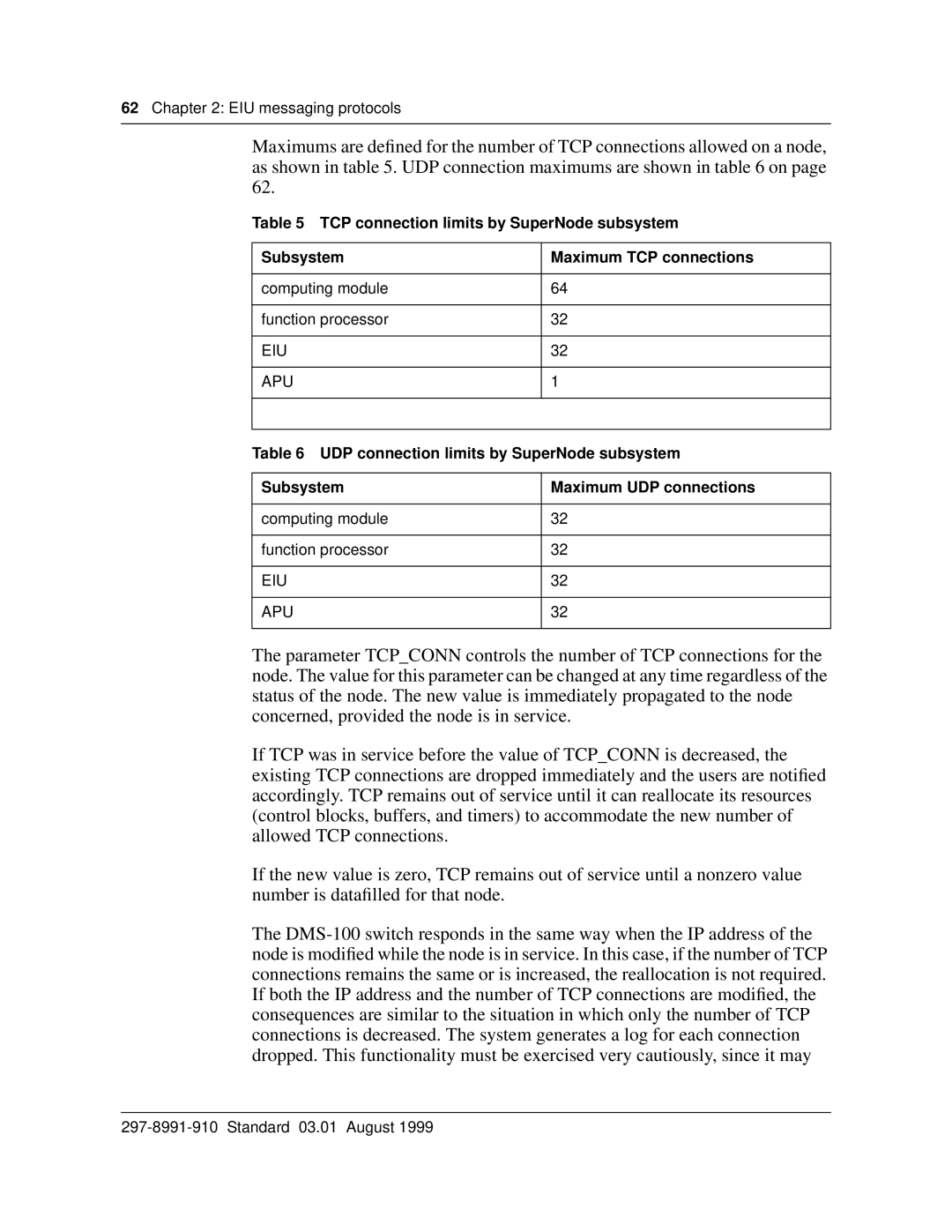
62Chapter 2: EIU messaging protocols
Maximums are defined for the number of TCP connections allowed on a node, as shown in table 5. UDP connection maximums are shown in table 6 on page 62.
Table 5 TCP connection limits by SuperNode subsystem
Subsystem | Maximum TCP connections |
|
|
computing module | 64 |
|
|
function processor | 32 |
|
|
EIU | 32 |
|
|
APU | 1 |
|
|
|
|
Table 6 UDP connection limits by SuperNode subsystem | |
|
|
Subsystem | Maximum UDP connections |
|
|
computing module | 32 |
|
|
function processor | 32 |
|
|
EIU | 32 |
|
|
APU | 32 |
|
|
The parameter TCP_CONN controls the number of TCP connections for the node. The value for this parameter can be changed at any time regardless of the status of the node. The new value is immediately propagated to the node concerned, provided the node is in service.
If TCP was in service before the value of TCP_CONN is decreased, the existing TCP connections are dropped immediately and the users are notified accordingly. TCP remains out of service until it can reallocate its resources (control blocks, buffers, and timers) to accommodate the new number of allowed TCP connections.
If the new value is zero, TCP remains out of service until a nonzero value number is datafilled for that node.
The
